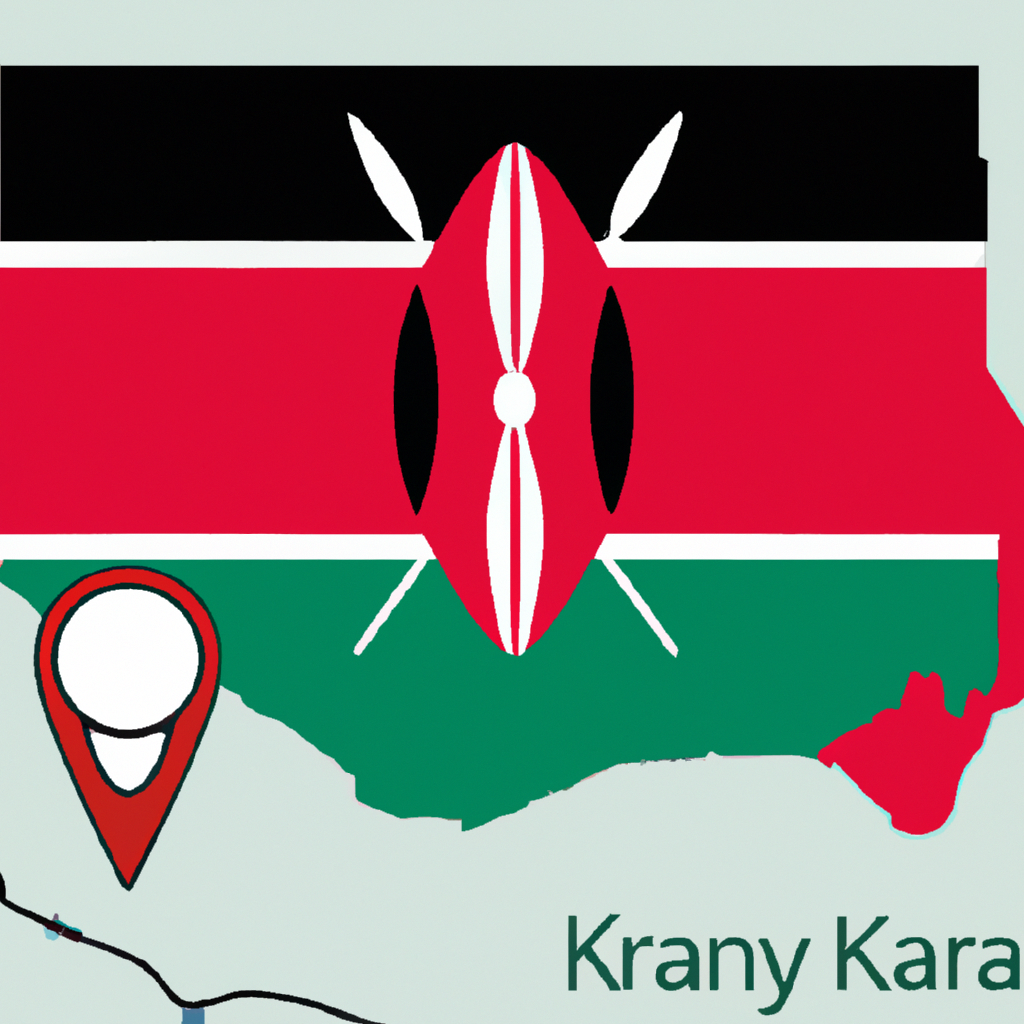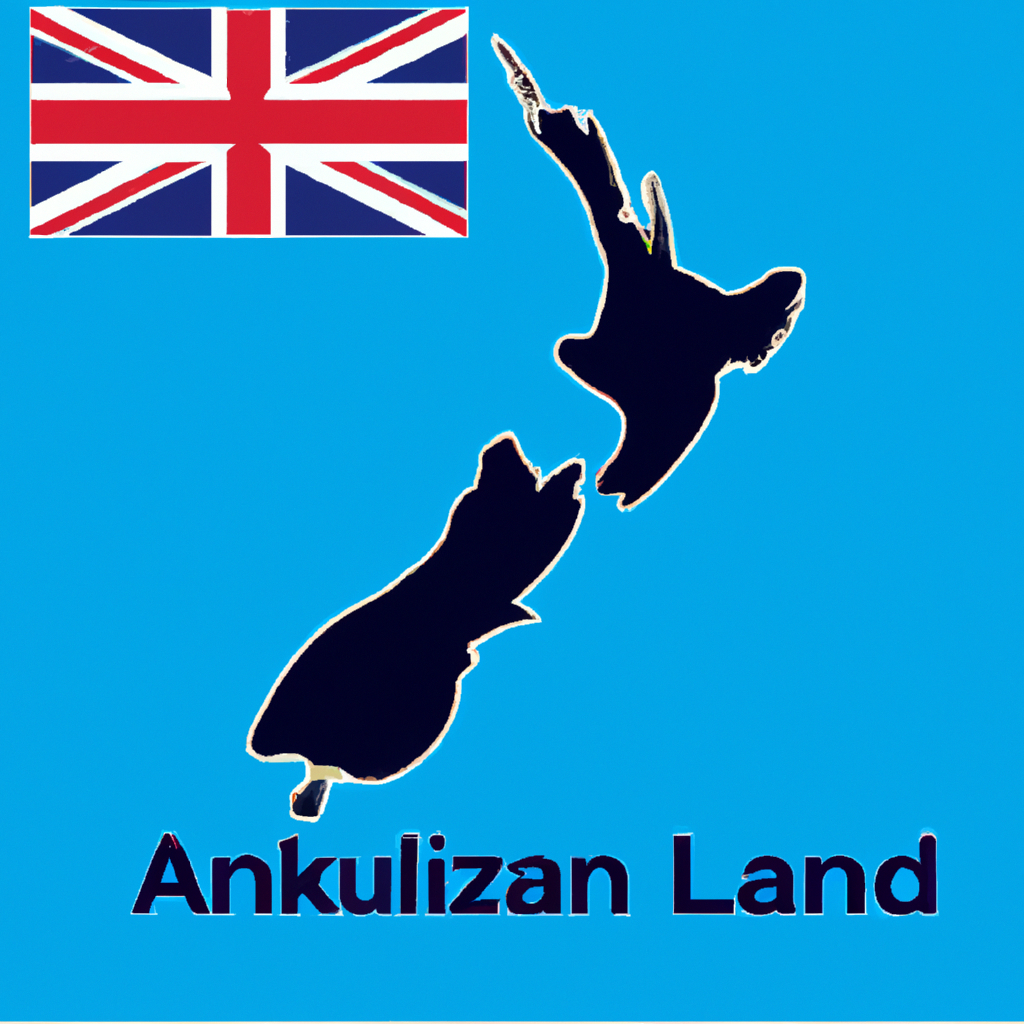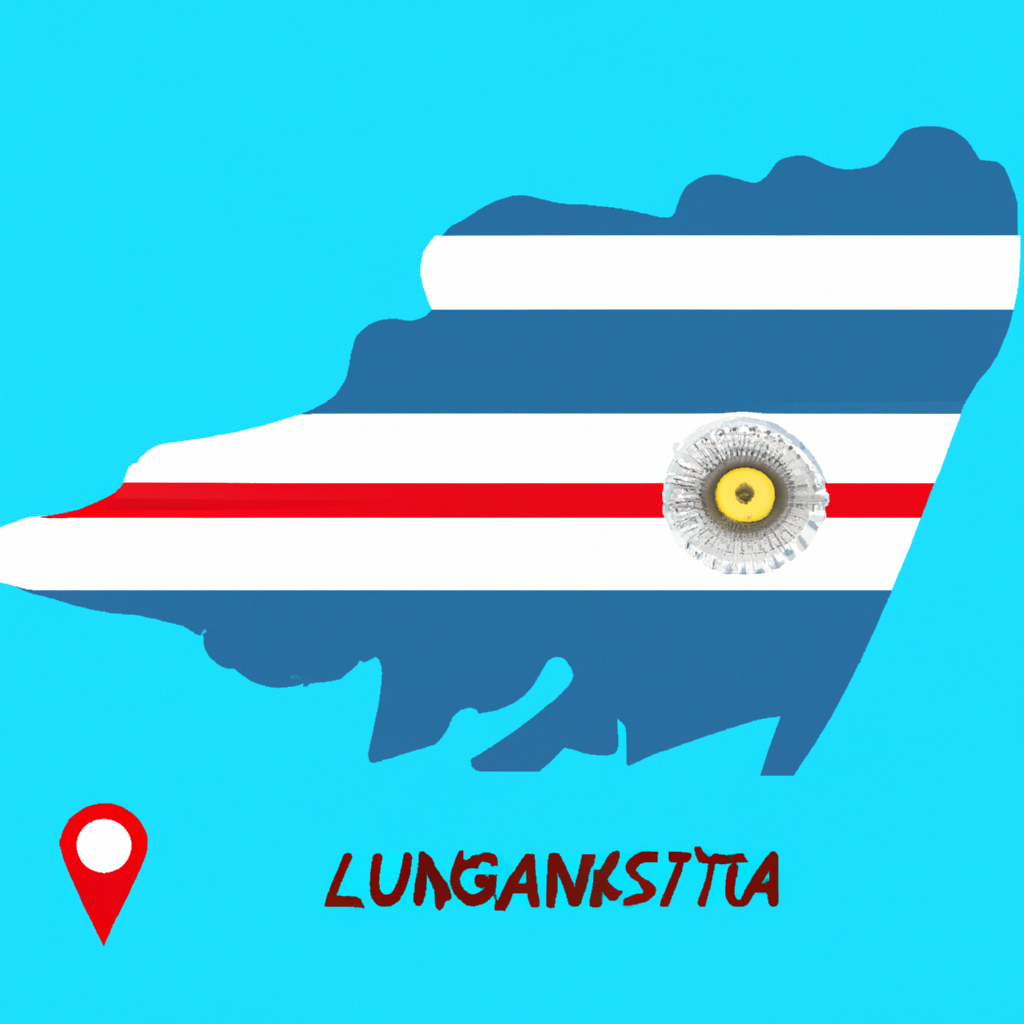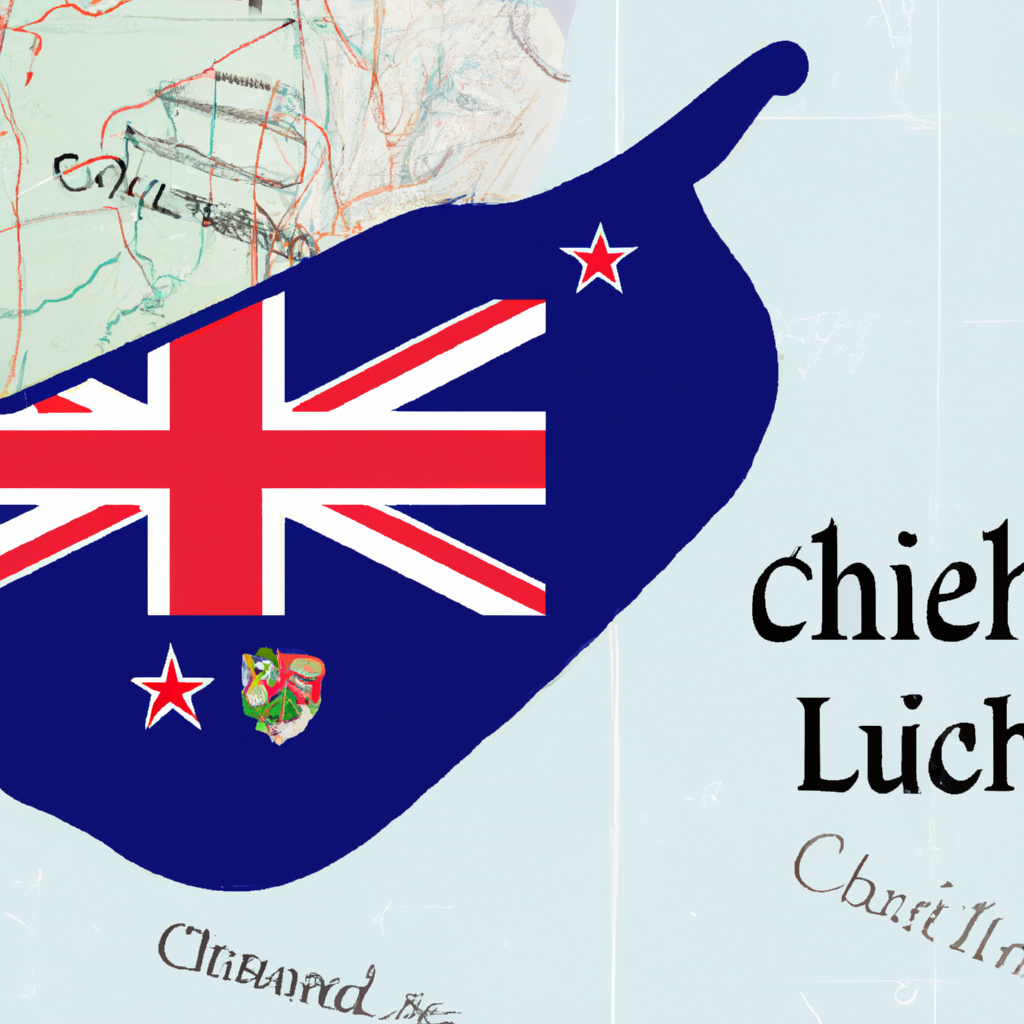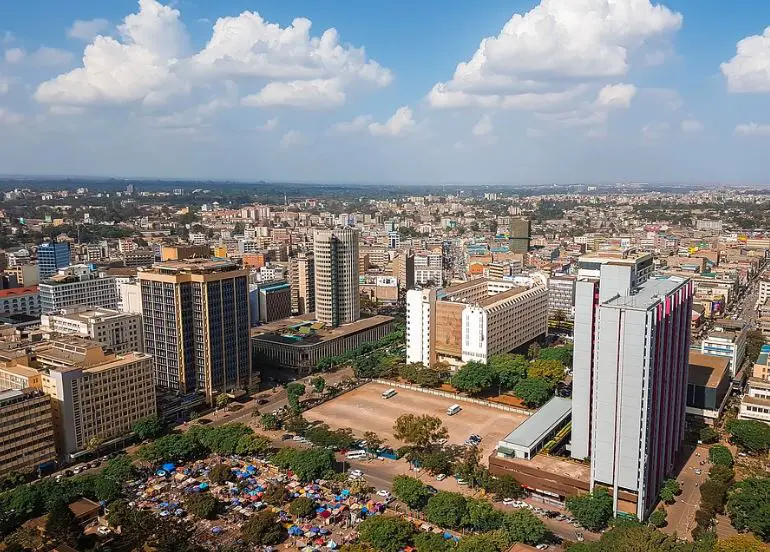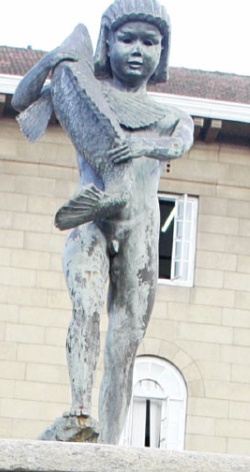Nairobi, Kenya: Interesting Facts,History, Things to do,Why to Visit
Post ByAdequate Travel
Nairobi, the colourful Capital of Kenya, is an exciting city full of interesting facts, spectacular history and unique activities just waiting to be discovered by travelers. It's the ultimate African safari destination, known for its many game reserves and beautiful scenery. But the city is more than just wildlife and nature - it is a vibrant hub of urban life, complete with fantastic restaurants, culture and more. From shopping and dining to sports and sightseeing, there's something for everyone in Nairobi. Visitors can explore interesting local attractions, sample delicious cuisine and explore the city's vibrant culture. Whether you're an experienced traveler or a first-timer, there's something in Nairobi for you. Why not take a trip to this amazing city and experience it for yourself?
Kenya is a country located in East Africa. It is known for its diverse landscapes, including the savannahs of Masai Mara, the Rift Valley, and the coastal region with beautiful beaches. The capital city is Nairobi, which is a major economic and political hub in the region. Kenya gained independence from British colonial rule in 1963 and has since developed into one of Africa's leading economies. Agriculture, tourism, manufacturing, and services sectors are crucial to its economy. The country faces challenges such as poverty, inequality, corruption, and terrorism, but it also possesses a rich cultural heritage and wildlife, making it a popular destination for tourists. Kenya is also known for producing world-renowned long-distance runners and its passion for athletics.Step back in time as you visit the historical sites in kenya, where the past comes alive.
Interesting facts
Kenya's Geography and Natural Wonders
1. Diverse Landscapes: Kenya is known for its remarkable natural beauty and diverse geography. It is home to vast savannahs, highlands, mountain ranges, deserts, and coastal areas. For instance, the Great Rift Valley, running through Kenya, is an awe-inspiring geographical feature that stretches from the Red Sea down to Mozambique.
2. Mount Kenya: As Africa's second-highest peak, Mount Kenya stands majestically on the equator. This volcanic mountain offers breathtaking views and attracts climbers and hikers from around the world.
3. Maasai Mara National Reserve: Located in southwestern Kenya, the Maasai Mara Reserve is famous for the annual wildebeest migration. Each year, millions of wildebeests, zebras, and other wildlife species cross over from Serengeti National Park in Tanzania to Maasai Mara, creating one of the most remarkable natural spectacles on Earth.
Kenya's Cultural Heritage
1. Maasai Tribe: The Maasai people are one of Kenya's most iconic tribes, renowned for their distinctive red traditional attire and vibrant beadwork. They have managed to preserve their traditional way of life, including their unique customs, beliefs, and traditional ceremonies.
2. Swahili Culture: The Swahili culture is a blend of African, Arab, and European influences, mainly found along the coastal regions of Kenya. It is characterized by its beautiful architecture, traditional Swahili cuisine, and the melodious Swahili language.
3. Music and Art: Kenya has a rich musical and artistic heritage. Traditional Kenyan music, such as Benga and Chakacha, offers a unique rhythmic experience, while various art displays showcase the creativity and craftsmanship of Kenyan artists.
Kenya's Wildlife and Conservation Efforts
1. Safari Destination: Kenya is renowned for its wildlife safaris. The country's numerous national parks and reserves, such as Amboseli National Park, Tsavo East National Park, and Samburu National Reserve, provide opportunities to see iconic African wildlife, including lions, elephants, giraffes, zebras, and cheetahs, in their natural habitats.
2. Conservation Initiatives: Kenya has made significant efforts towards wildlife conservation. Conservation projects, such as the Amboseli Trust for Elephants and the David Sheldrick Wildlife Trust, focus on protecting vulnerable species and rehabilitating orphaned animals.
3. Endangered Species: Kenya is home to various endangered species, including the black rhinoceros and Grevy's zebra. Conservation efforts have been crucial in preserving these species and raising awareness about the importance of wildlife preservation.
From museums to parks,kenya tourist attractions offer something for everyone, making it a versatile destination for all type of tourists.History of Kenya
The history of Kenya is complex and diverse, encompassing the rich and intricate story of its people, cultures, and political developments. Here are some key points highlighting the major events and periods in Kenya's history:
Ancient and Pre-Colonial Era
- Early human fossils discovered in Kenya's Rift Valley suggest that the region has been inhabited by humans for millions of years.
- Bantu-speaking groups arrived in the region between 2,000 and 1,000 years ago, bringing agriculture and ironworking skills.
- Various indigenous communities, such as the Maasai, Luo, Kikuyu, and Swahili, became prominent in different parts of Kenya, developing their own distinct cultures, traditions, and socio-political systems.
- The coastal areas of Kenya had thriving trade connections with the Arab world and later with European explorers and traders, resulting in the emergence of vibrant Swahili city-states like Mombasa, Lamu, and Malindi.
Colonial Era
- Kenya became a British protectorate in the late 19th century, as European powers scrambled to establish colonies in Africa.
- The construction of the Uganda Railway, linking Mombasa to Uganda's inland capital, Kampala, played a crucial role in connecting Kenya to the larger British Empire and facilitating the exploitation of resources.
- The colonization of Kenya led to conflicts and resistance from various indigenous communities, most notably the Maasai and the Kikuyu, who fought against the British rule through revolts and uprisings.
- The British implemented settler-farming policies that resulted in the displacement of indigenous communities from fertile lands, leading to socio-economic and political inequalities.
Independence and Post-Colonial Era
- Kenya gained independence from Britain on December 12, 1963, under the leadership of Jomo Kenyatta, who became the country's first president.
- The early years of independence were marked by efforts to consolidate power, build a national identity, and address the challenges inherited from colonial rule.
- Kenya experienced political instability and tensions during the post-independence period, including tribal conflicts and the attempted coup in 1982.
- Economic development and modernization initiatives were launched, including the establishment of industries, infrastructure projects, and educational reforms.
- The introduction of multi-party democracy in 1991 brought about political reforms, followed by subsequent presidential elections and changes in leadership.
Recent Developments
- Kenya has faced various socio-economic challenges, including poverty, corruption, ethnic tensions, and periodic outbreaks of violence related to elections.
- The country has also made significant progress in areas such as technology, tourism, agriculture, and urban development.
- Kenya has emerged as a regional economic hub and plays a crucial role in the East African Community, promoting cross-border trade and cooperation.
- Efforts to promote peace, reconciliation, and inclusion have been ongoing, leading to the adoption of a new constitution in 2010, which aimed to address historical injustices and ensure equitable development.
This summary of Kenya's history provides a glimpse into the diverse cultural and political dynamics that have shaped the nation over the centuries, highlighting its resilience, struggles, achievements, and ongoing efforts towards progress and development.
Exploring the rich heritage of historical sites in kenya is a journey through time and culture.Famous things of Kenya
1. Maasai Mara National Reserve:
Maasai Mara is perhaps the most famous national reserve in Kenya. It is located in the southwestern part of the country and is known for its dramatic wildebeest migration, where millions of wildebeest and other animals cross the Mara River in search of greener pastures. The reserve is also home to a rich diversity of wildlife, offering visitors the opportunity to spot lions, elephants, giraffes, zebras, and more.2. Mount Kenya:
Mount Kenya is the highest mountain in Kenya and the second-highest peak in Africa after Mount Kilimanjaro. It is a popular destination for hikers and mountaineers, offering breathtaking views and diverse ecosystems. There are several routes to reach the summit, each varying in difficulty and duration. The mountain also holds cultural significance for the local Kikuyu people, who believe it is the realm of their god, Ngai.3. Kenyan Safaris:
Kenya is renowned for its incredible safaris, where visitors can experience close encounters with the wild animals that call the country home. From the Masai Mara to Amboseli National Park and Tsavo National Park, there are numerous safari destinations to choose from. Safaris provide an opportunity to see the "Big Five" (lion, elephant, buffalo, leopard, and rhinoceros) and other fascinating wildlife in their natural habitats.4. Lamu Island:
Lamu Island is a UNESCO World Heritage Site located on the northeastern coast of Kenya. It is known for its well-preserved Swahili architecture, peaceful atmosphere, and beautiful beaches. The island is car-free, with donkeys and dhows (traditional sailing vessels) being the primary modes of transportation. Visitors can explore historical sites, enjoy water sports, indulge in Swahili cuisine, and immerse themselves in the unique charm of the island.5. Great Rift Valley:
The Great Rift Valley is a geographical feature that stretches from Syria to Mozambique, passing through Kenya. It offers stunning landscapes, including scenic lakes, hot springs, and breathtaking viewpoints. In Kenya, Lake Nakuru and Lake Naivasha are popular stops along the Rift Valley. Lake Nakuru National Park, in particular, is famous for its large population of pink flamingos and other bird species.6. Nairobi National Park:
Located just outside the capital city of Nairobi, Nairobi National Park is a unique wildlife reserve that boasts a wide variety of animals, including lions, rhinos, giraffes, zebras, and more. It is one of the few national parks in the world situated within a city's limits. The park offers game drives, walking trails, and picnic areas, allowing visitors to experience wildlife encounters without venturing too far from the city center.7. Maasai Culture:
The Maasai people are one of the most famous ethnic groups in Kenya. Their distinctive red clothing, intricate beadwork, and traditional customs have captivated the world's attention. Visitors can immerse themselves in Maasai culture by visiting Maasai villages, where they can learn about their way of life, traditional dances, and participate in authentic cultural experiences.Discover some unique facts about kenya that will leave you amaze and intrigue.Culture of Kenya
In Kenya, you will find a rich and diverse culture that is influenced by various indigenous African tribes, as well as Arab, Persian, Indian, and European communities. The country is known for its vibrant traditions, music, dance, art, crafts, and culinary delights. Let's explore some key aspects of Kenyan culture:
1. Tribes and Ethnic Diversity
Kenya is home to more than 40 different ethnic groups, each with its own distinct traditions, languages, and customs. Some of the prominent tribes include the Kikuyu, Luo, Luhya, Kalenjin, Kamba, and Maasai. Each tribe has a unique cultural heritage, with practices and beliefs passed down through generations.
2. Music and Dance
Music and dance are an integral part of Kenyan culture. Different tribes have their own styles of music, instruments, and dance forms. For example, the Maasai people are known for their rhythmic chanting and jumping dances, while the Luo tribe has vibrant traditional songs and the famous "Benga" music style. Traditional instruments like drums, thumb pianos, and flutes are commonly used.
3. Art and Crafts
Kenya has a thriving art and craft scene, with skilled artisans producing beautiful sculptures, woodcarvings, beadwork, pottery, and paintings. These crafts often depict scenes from everyday life, wildlife, or tribal traditions. The Maasai beadwork and intricate Kisii soapstone carvings are particularly renowned worldwide.
4. Traditional Clothing and Adornments
Kenyan tribes have their own traditional clothing and adornments that reflect their cultural identity. The Maasai people, for instance, are known for their vibrant and colorful clothing, beadwork jewelry, and intricate hairstyles. Other tribes have unique attire and accessories, such as the Kamba's woven sisal bags or the Turkana's elaborate beadwork headdresses.
5. Cuisine
Kenyan cuisine is a blend of indigenous ingredients and flavors influenced by various cultures. Staple foods include ugali (a maize flour porridge), sukuma wiki (collard greens), and nyama choma (grilled meat). Dishes like pilau (spiced rice), chapati (flatbread), and samosas showcase Indian culinary influences, while Swahili dishes like biryani and coconut-based stews reflect Arab and Persian influences.
Overall, the culture of Kenya is a colorful mosaic that celebrates diversity, traditional practices, and creativity. It is worth exploring the country's various cultural aspects to truly appreciate the richness of Kenyan heritage.Immerse yourself in the local culture by exploring kenya's top-rated tourist attractions.Cuisine of Kenya
Kenyan cuisine is diverse and reflects the country's rich cultural heritage and influences from various communities, such as the Kikuyu, Luo, Luhya, and Maasai tribes, as well as Arabian, British, Indian, and Portuguese influences. Traditional Kenyan dishes often consist of staple foods such as maize, beans, potatoes, and various types of meat, along with vegetables and fruits.Popular Kenyan dishes:
1. Ugali: A staple food made from maize flour, often served with sukuma wiki (collard greens) or nyama choma (grilled meat).
2. Nyama Choma: Barbecued or grilled meat, usually goat or beef, marinated in a mixture of spices and herbs.
3. Irio: Mashed potatoes and peas, often served with grilled meat or stew.
4. Pilau: A flavorful rice dish cooked with a variety of spices such as cumin, cardamom, and cloves, often served with kachumbari (a tomato and onion salad).
5. Githeri: A hearty stew made with a combination of boiled beans and maize, often flavored with spices and vegetables.
6. Sukuma Wiki: A popular dish made with collard greens cooked in oil, onions, and tomatoes, often served with ugali or chapati.
7. Chapati: A type of flatbread made with wheat flour, oil, and water, usually served with stews or curries.
8. Matoke: Green bananas or plantains cooked and mashed, often served with meat or a sauce.
9. Mandazi: A fried dough pastry similar to a doughnut, usually served with tea or as a snack.
10. Samosa: A savory pastry filled with meat, vegetables, or lentils, usually deep-fried and served as a snack or appetizer.
Kenyan cuisine offers a blend of flavors, textures, and aromas that cater to a variety of tastes. Whether it's the smoky-sweet aroma of nyama choma on a grill, the comforting taste of ugali paired with sukuma wiki, or the delightful crunch of mandazi, each dish contributes to the vibrant food culture of Kenya. The diverse influences and traditional cooking methods make Kenyan cuisine an exciting culinary experience for both locals and visitors alike.Discover the untold stories behind kenya unique facts, and historical treasures.1. Go on a Safari
Kenya is renowned for its incredible wildlife and stunning national parks. Going on a safari is a must-do activity when visiting Kenya. Maasai Mara National Reserve is one of the most popular safari destinations in the country, offering the chance to witness the annual wildebeest migration, as well as a wide variety of other animals such as lions, cheetahs, elephants, and giraffes.
2. Explore Nairobi
Nairobi, the capital city of Kenya, has a lot to offer visitors. Enjoy a visit to the Nairobi National Museum, which showcases the rich history, culture, and art of Kenya. Take a stroll in the peaceful Nairobi National Park, located just outside the city center, where you can spot rhinos, lions, and other wildlife. The city also has lively markets, delicious restaurants, and vibrant nightlife.
3. Relax at Coastal Beaches
Kenya boasts stunning coastal beaches along the Indian Ocean, such as Diani Beach and Watamu. These beaches are perfect for relaxation, sunbathing, and swimming in the crystal-clear water. Enjoy water sports activities like snorkeling, diving, or even deep-sea fishing. The coastal region also offers opportunities to visit historical sites like Fort Jesus in Mombasa.
4. Visit Lake Nakuru National Park
Lake Nakuru National Park is famous for its birdlife, including thousands of pink flamingos that gather on the lake. The park is home to over 400 species of birds, making it a paradise for birdwatchers. Aside from birds, you can also spot rhinos, zebras, buffalos, and other wildlife during a safari in the park.
5. Climb Mount Kenya
For adventure enthusiasts, climbing Mount Kenya is an incredible experience. As the highest mountain in Kenya and the second-highest in Africa, reaching the summit is a challenging but rewarding feat. The mountain offers various climbing routes, stunning views, and the chance to encounter unique flora and fauna along the way.
When planning your trip to kenya, be sure to include the best things to do in kenya, which encompass a wide range of cultural experiences.Climate of Kenya
The climate of Kenya is diverse due to its location on the equator and its varied topography. The country experiences different climatic conditions in different regions, ranging from tropical to arid. The following are the main climatic regions in Kenya:
1. Equatorial Region
This region is situated around the equator and experiences a hot and humid climate throughout the year. The average temperature remains consistent at around 27°C (80°F) with high levels of rainfall, which can exceed 2,000mm (79 inches) annually. Examples of cities located in this region are Kisumu and Eldoret.
2. Coastal Region
The coastal region of Kenya is influenced by the Indian Ocean, resulting in a hot and humid climate. The temperatures range from 22°C (72°F) to 34°C (93°F) with high levels of humidity. The region receives moderate to high rainfall, averaging between 500mm (20 inches) to 1,000mm (39 inches) annually. Cities like Mombasa and Malindi are located in this region.
3. Highlands Region
The highlands region in the center of Kenya experiences a temperate climate due to its elevation. The temperatures range from around 15°C (59°F) to 25°C (77°F), with cooler temperatures experienced at higher altitudes. The region receives moderate rainfall, averaging between 800mm (31 inches) to 1,200mm (47 inches) annually. Examples of cities located in this region include Nairobi and Nakuru.
4. Arid and Semi-Arid Region
The northern part of Kenya, known as the arid and semi-arid region, experiences a dry and hot climate. The region receives very little rainfall, with annual precipitation ranging between 150mm (6 inches) to 500mm (20 inches). The temperatures can be extreme, reaching up to 40°C (104°F) during the day. Some cities located in this region are Marsabit and Wajir.
5. Western Region
The western region of Kenya experiences a more equatorial climate with high levels of rainfall. The temperatures range from 20°C (68°F) to 30°C (86°F), and the region receives significant amounts of rainfall, averaging between 1,200mm (47 inches) to 2,000mm (79 inches) annually. Kisumu and Kakamega are examples of cities located in this region.
Discover the untold stories behind kenya unique facts, and historical treasures.Popular activities in Kenya
1. Safari Tours:
Safari tours are one of the most popular activities in Kenya. The country is known for its stunning wildlife and national parks such as Maasai Mara, Amboseli National Park, and Tsavo National Park. Tourists can go on game drives to spot the big five animals (lion, leopard, rhinoceros, elephant, and buffalo) and other unique wildlife species.
2. Mount Kenya Climbing:
Climbing Mount Kenya is a thrilling adventure for outdoor enthusiasts. As the highest mountain in Kenya and the second-highest in Africa, it offers various routes for climbers of different skill levels. The most popular routes are the Sirimon and Chogoria routes, which provide breathtaking views of the surrounding peaks and landscapes.
3. Beach Holidays in Mombasa:
Mombasa, a coastal city in Kenya, is a popular destination for beach holidays. Its white sandy beaches, turquoise waters, and vibrant coral reefs attract tourists seeking relaxation and water activities. Visitors can enjoy swimming, snorkeling, scuba diving, and boat tours to explore the marine life and nearby islands.
4. Cultural Visits:
Kenya is rich in diverse cultures and traditions. Many visitors engage in cultural visits to local tribes such as the Maasai, Samburu, and Turkana. These visits provide an opportunity to learn about their unique lifestyles, traditions, dances, and crafts.
5. Hot Air Balloon Safaris:
A unique experience in Kenya is a hot air balloon safari. This activity allows tourists to soar above the picturesque landscapes, observing wildlife from a different perspective. The Maasai Mara Reserve is a popular location for hot air balloon safaris, offering stunning views of the savannah and wildlife below.
Plan your trip with a list of the best things to do in kenya, catering to all interests.Night life in Kenya
Kenya offers a vibrant and diverse nightlife scene with a wide range of options for locals and tourists alike. From lively bars and clubs to cultural performances and entertainment venues, there is something for everyone to enjoy during the evening hours.1. Nightclubs
Kenya's major cities like Nairobi and Mombasa are known for their bustling nightclub scenes. Popular nightclubs like B-Club and Kiza in Nairobi and Copa Cabana in Mombasa attract young party-goers with their energetic atmosphere, live music, and DJ sets. These venues often host popular Kenyan and international musicians and DJs.2. Bars and Lounges
If you prefer a more laid-back ambiance, Kenya is home to numerous bars and lounges where you can unwind with friends. Places like Brew Bistro, Tribe Rooftop Lounge, and Lord Erroll in Nairobi offer a relaxed setting with a wide selection of drinks and often have live bands or acoustic performances adding to the evening's charm.3. Cultural Performances
For a taste of Kenya's rich cultural heritage, attending a cultural performance can be a great option. The Bomas of Kenya in Nairobi is a popular venue that showcases traditional music, dance, and storytelling from various Kenyan tribes. The performances give insights into the diversity and traditions of different ethnic groups in Kenya.4. Casinos
Kenya has a number of casinos where you can try your luck at various games. The most famous one is the Casino Malindi located in Malindi town, known for its vibrant gambling scene. These casinos often offer other entertainment options like live music performances and themed nights to enhance the overall experience.5. Live Music Venues
If you enjoy live music, Kenya has a thriving live music scene. Venues such as The Alchemist and Jazz Central in Nairobi regularly host local and international bands and musicians, covering a wide range of genres. These venues provide a great opportunity to connect with the local music scene and enjoy a night filled with live performances.In conclusion, Kenya's nightlife scene offers a variety of options to enjoy the evening hours. Whether you prefer dancing the night away in a nightclub, relaxing with friends in a bar, immersing yourself in cultural performances, trying your luck at a casino, or enjoying live music, Kenya has something for every taste and preference.kenya tourist attractions offer a diverse range of experiences for every traveler.Reasons to Visit Kenya
1. Wildlife and Safari: Kenya is famous for its diverse and unparalleled wildlife. Visitors have the opportunity to embark on thrilling safari experiences in the country's many national parks and game reserves. From witnessing the Great Migration in Masai Mara to spotting the "Big Five" (lion, elephant, buffalo, rhinoceros, and leopard), Kenya offers unforgettable encounters with nature.Example:
- Seeing herds of wildebeest crossing the Mara River during the Great Migration in Masai Mara
- Spotting elephants bathing in the mud at Amboseli National Park
- Watching lions resting under acacia trees in Tsavo National Park
2. Stunning Landscapes: Kenya not only boasts incredible wildlife, but it is also home to breathtaking landscapes that will leave visitors in awe. From the snow-capped peaks of Mount Kenya to the picturesque Rift Valley, the country offers a wide variety of natural beauty.Example:
- Hiking through the forests and moorlands of Mount Kenya
- Enjoying panoramic views of the Great Rift Valley and its lakes
- Exploring the unique landscapes of Lake Nakuru National Park, known for its pink flamingos
3. Rich Cultural Heritage: Kenya is a melting pot of diverse cultures and ethnicities. Visitors will have the opportunity to immerse themselves in the traditions and customs of different tribes, such as the Maasai, Samburu, and Turkana. It is an excellent chance to learn about Kenya's history and gain insight into its vibrant cultural heritage.Example:
- Visiting a traditional Maasai village and learning about their way of life
- Witnessing traditional dances and music performances
- Exploring local markets to buy traditional crafts and souvenirs
4. Beautiful Beaches: Along Kenya's coastline lies a paradise of stunning beaches and crystal-clear waters. Locations like Diani Beach and Watamu are popular destinations for relaxation and water sports. Visitors can enjoy activities such as snorkeling, diving, sunbathing, and even swimming with dolphins.Example:
- Relaxing on the pristine white sandy beaches of Diani Beach
- Exploring the rich marine life and coral reefs while snorkeling in Watamu Marine National Park
- Taking a boat trip to spot dolphins and enjoy the turquoise waters of the Indian Ocean
5. Adventure Activities: Kenya offers an array of adventurous activities for thrill-seekers. From climbing Mount Kenya, Africa's second-highest peak, to hot air balloon safaris over the Masai Mara, there is something for everyone looking for an adrenaline rush.Example:
- Summiting Mount Kenya and witnessing breathtaking views from the top
- Taking a hot air balloon safari for a unique perspective of the wildlife below
- White-water rafting in the Tana River for an exhilarating experience
Overall, Kenya offers a blend of wildlife, landscapes, cultural heritage, beaches, and adventure activities. It is a destination that caters to various interests and promises unforgettable experiences for those who visit.Whether you're a history buff or an adventure seeker, kenya has an attraction for you. So, don't miss the chance to visit popular places in kenyaNumber of days required to visit in Kenya
When planning a trip to Kenya, the number of days required can vary depending on your travel preferences and the areas you wish to explore. Here are some factors to consider:
1. Safari Duration:
If you are interested in experiencing Kenya's famous wildlife safaris, you will need a minimum of 4-5 days. This duration allows you to visit popular national parks like Maasai Mara, Amboseli, Tsavo, and Lake Nakuru, where you can witness the Big Five (elephant, rhino, lion, leopard, and buffalo) and other stunning wildlife.
2. Beach or Coastline Visit:
If you also want to relax on Kenya's beautiful beaches along the coastline, such as Mombasa, Diani, or Malindi, it is recommended to allocate an additional 3-4 days. This will give you enough time to enjoy the turquoise waters, indulge in water sports, explore marine life by snorkeling or diving, and soak up the sun.
3. Cultural Experiences:
To immerse yourself in Kenya's rich cultural heritage and interact with local communities, you may want to extend your stay by 2-3 days. Visit traditional Maasai villages, learn about their customs and traditions, participate in tribal dances, and sample authentic Kenyan cuisine.
4. Mount Kenya Hike:
If you are up for a challenging adventure, climbing Mount Kenya is an option worth considering. The trek typically takes 4-6 days, depending on the chosen route and your hiking abilities.
5. Nairobi Exploration:
If you wish to explore Kenya's capital city, Nairobi, allocate at least 2-3 days. Visit popular attractions like the Nairobi National Park, David Sheldrick Wildlife Trust, Karen Blixen Museum, and enjoy vibrant markets and local cuisine.
Overall:
Considering the above factors, a recommended duration for a comprehensive trip to Kenya would be around 10-14 days. This timeframe allows you to take full advantage of the diverse experiences the country has to offer, from wildlife safaris to relaxing on the coast, exploring cultural sites, and indulging in adventurous activities.
Example:
Example 1:
A traveler planning to visit Kenya for a wildlife safari and coastal relaxation could plan for a 7-day trip. This would include 3 days for a safari in Maasai Mara or Amboseli and 4 days for beach exploration in Diani or Malindi.
Example 2:
Another traveler interested in wildlife, cultural experiences, and hiking may decide on a 12-day itinerary. This could include 5 days for wildlife safaris in Maasai Mara and Lake Nakuru, 3 days for cultural visits to Maasai villages, and 4 days for climbing Mount Kenya.
Discover unique facts about kenya, a destination filled with rich history and natural beauty.Significance of Kenya
Kenya, located on the eastern coast of Africa, holds immense significance both regionally and globally. Known for its rich biodiversity, natural resources, cultural heritage, and economic potential, Kenya plays a crucial role in various aspects. Here are some key points highlighting the significance of Kenya:
Economic Potential
1. Agriculture: Kenya has a diverse agricultural sector, with exports of tea, coffee, flowers, and horticultural products bringing in significant revenue. The country is one of the largest tea exporters in the world and a major producer of coffee.
2. Tourism: Kenya is renowned for its wildlife reserves and national parks, attracting tourists from around the globe. The Maasai Mara, Amboseli National Park, and Mount Kenya are some popular tourist destinations, contributing to the country's economic growth.
3. Energy: Kenya has made significant advancements in renewable energy, particularly geothermal power. The country is a leader in Africa in terms of geothermal energy production, reducing reliance on non-renewable energy sources.
Environmental Biodiversity
1. Wildlife Conservation: Kenya is home to an abundance of wildlife, including the "Big Five" (elephant, lion, leopard, buffalo, rhinoceros). Conservation efforts, along with national parks and reserves, play a crucial role in preserving these iconic species and their habitats.
2. Great Rift Valley: The geological significance of Kenya's portion of the Great Rift Valley cannot be overlooked. It is a unique ecosystem, hosting diverse landscapes, lakes, and geothermal activities, attracting scientists, researchers, and tourists alike.
Cultural Heritage
1. Indigenous Communities: Kenya is home to various indigenous communities, such as the Maasai, Turkana, Samburu, and many others. These communities have rich cultural traditions, including unique art, music, dance, and pastoral lifestyles.
2. World Heritage Sites: Kenya boasts several UNESCO World Heritage Sites, including Lamu Old Town, Lake Turkana National Parks, and Mount Kenya National Park. These sites hold immense historical, cultural, and ecological significance.
Regional Stability and Influence
1. Political Stability: Kenya has played a key role in maintaining political stability in the East African region. It has been a hub for diplomatic engagements, peacekeeping initiatives, and mediations in neighboring countries.
2. Economic Hub: Nairobi, the capital city, serves as an economic hub for East Africa, hosting regional headquarters of international organizations, banking institutions, and other businesses.
Overall, Kenya's significance extends beyond its borders, encompassing environmental conservation, cultural diversity, economic growth, and regional influence. The country's natural and cultural heritage, along with its economic potential, contribute to its global significance and make it an essential player in the African continent.From hidden gems to iconic landmarks, kenya has something for every traveler's taste.What is the official language of Kenya?
The official language of Kenya is English. English is widely spoken and recognized as the official language of administration, commerce, and education in Kenya. However, there are also several other languages spoken by different ethnic groups in the country, such as Swahili, Kikuyu, Luo, and Luhya.
What is the currency used in Kenya?
The currency used in Kenya is the Kenyan Shilling (KES). The shilling is subdivided into 100 cents. It is recommended to carry Kenyan shillings when visiting Kenya, as it is the widely accepted currency for transactions. There are various ways to obtain the local currency, such as exchanging your currency at banks, authorized exchange bureaus, or withdrawing cash from ATMs.
Is Kenya a safe country to visit?
Kenya is generally a safe country to visit, but like any travel destination, it is always important to take precautions and be aware of your surroundings. Avoid displaying expensive items in public, be cautious of pickpocketing in crowded areas, and use reliable transportation options. It is also advisable to follow travel advisories and guidelines provided by your government or travel agencies.
What are the popular tourist attractions in Kenya?
Kenya offers a wide range of popular tourist attractions, including:
- Maasai Mara National Reserve: Known for its annual wildebeest migration, it offers incredible wildlife viewing opportunities.
- Mount Kenya: The highest mountain in Kenya and offers various hiking and climbing routes.
- Lake Nakuru National Park: Famous for its pink flamingos and rhino sanctuary.
- Amboseli National Park: Offers breathtaking views of Mount Kilimanjaro and abundant wildlife.
- Lamu Island: A UNESCO World Heritage Site known for its Swahili culture and historical architecture.
What is the best time to visit Kenya?
The best time to visit Kenya largely depends on your travel preferences. However, the dry season and the months of July to October are generally considered the best time to witness the wildebeest migration in Maasai Mara National Reserve. The country experiences two rainy seasons: the short rains between October and November, and the long rains between March and May. It is advisable to check the weather and plan your visit accordingly.
Explore the popular places in kenya, and immerse yourself in its vibrant culture.